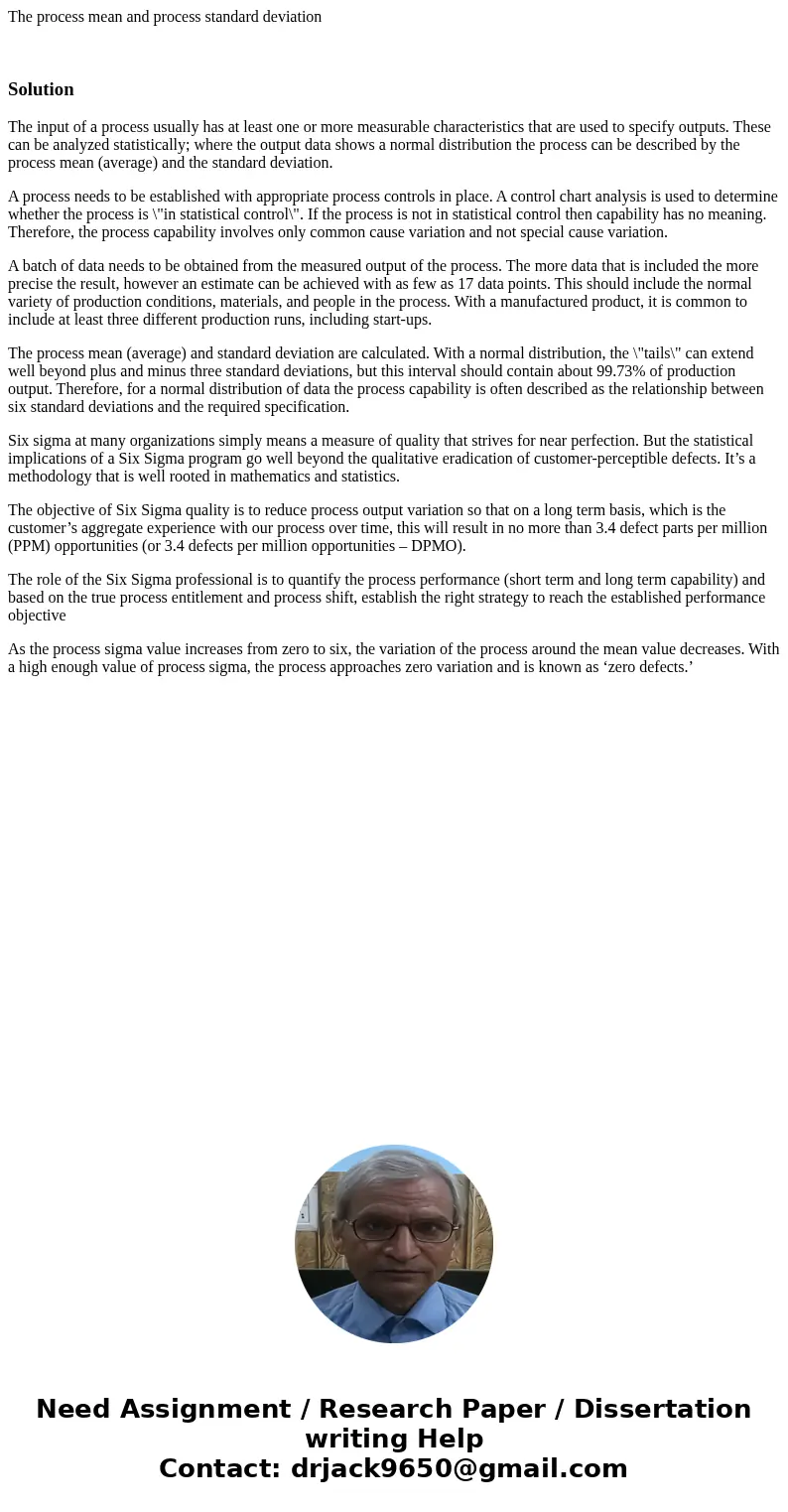The process mean and process standard deviation SolutionThe
The process mean and process standard deviation
Solution
The input of a process usually has at least one or more measurable characteristics that are used to specify outputs. These can be analyzed statistically; where the output data shows a normal distribution the process can be described by the process mean (average) and the standard deviation.
A process needs to be established with appropriate process controls in place. A control chart analysis is used to determine whether the process is \"in statistical control\". If the process is not in statistical control then capability has no meaning. Therefore, the process capability involves only common cause variation and not special cause variation.
A batch of data needs to be obtained from the measured output of the process. The more data that is included the more precise the result, however an estimate can be achieved with as few as 17 data points. This should include the normal variety of production conditions, materials, and people in the process. With a manufactured product, it is common to include at least three different production runs, including start-ups.
The process mean (average) and standard deviation are calculated. With a normal distribution, the \"tails\" can extend well beyond plus and minus three standard deviations, but this interval should contain about 99.73% of production output. Therefore, for a normal distribution of data the process capability is often described as the relationship between six standard deviations and the required specification.
Six sigma at many organizations simply means a measure of quality that strives for near perfection. But the statistical implications of a Six Sigma program go well beyond the qualitative eradication of customer-perceptible defects. It’s a methodology that is well rooted in mathematics and statistics.
The objective of Six Sigma quality is to reduce process output variation so that on a long term basis, which is the customer’s aggregate experience with our process over time, this will result in no more than 3.4 defect parts per million (PPM) opportunities (or 3.4 defects per million opportunities – DPMO).
The role of the Six Sigma professional is to quantify the process performance (short term and long term capability) and based on the true process entitlement and process shift, establish the right strategy to reach the established performance objective
As the process sigma value increases from zero to six, the variation of the process around the mean value decreases. With a high enough value of process sigma, the process approaches zero variation and is known as ‘zero defects.’

 Homework Sourse
Homework Sourse